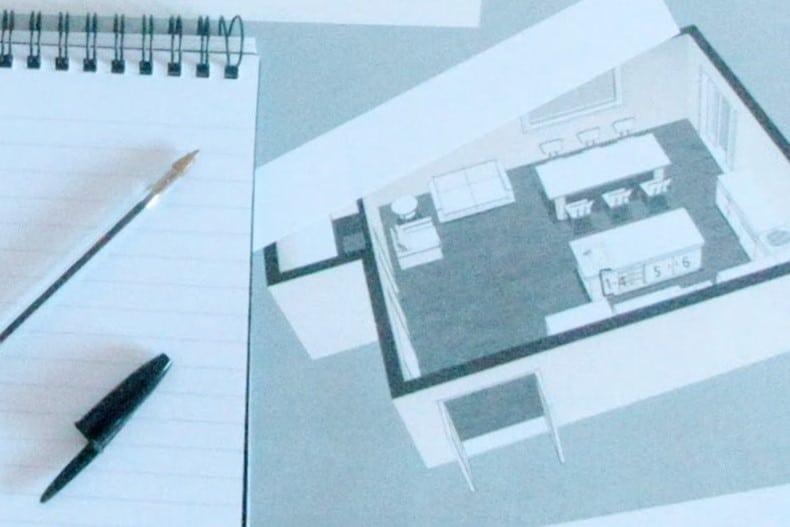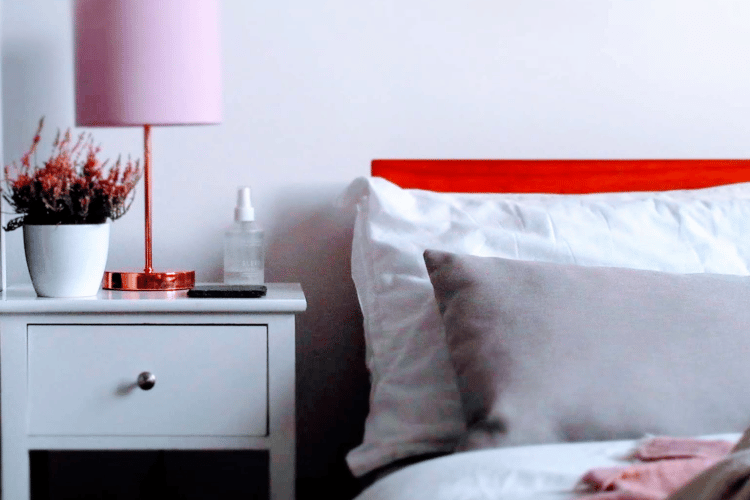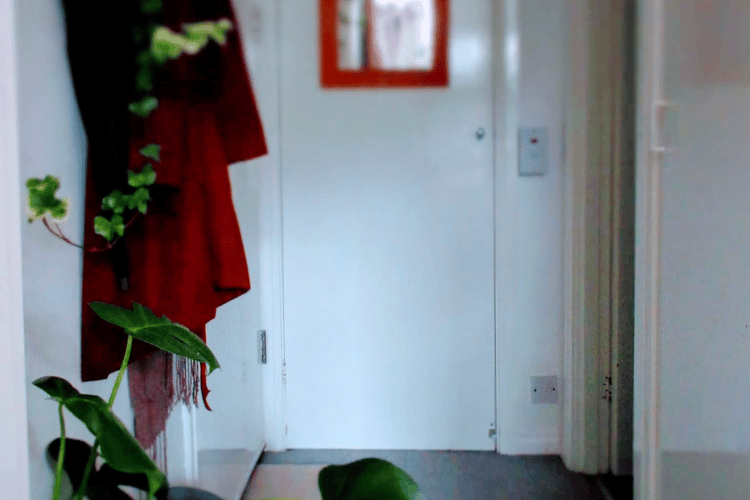There’s no denying it – unpacking is a mammoth task. Juggle work and/or children on top of that and it can start to feel stressful and overwhelming. At the same time, moving home is exciting. We want it to be organised correctly and feel homely. This guide will show you how to achieve this – covering step-by-step actions, things you need to consider and handy tips to help you unpack efficiently.

1. Plan Your Space
Consider Furniture and Feng Shui
Start by placing the big furniture in each room, then the smaller items. Think about the best position for Feng shui. Whether you’re sitting on your bed, sofa, table or desk, you should be able to see the doors and ideally have your back to a wall. It’s nice to be able to look into the room and look out of a window, though don’t make the mistake of pushing all your furniture against the walls and corners – be bold and move some items away, and give all furniture an inch or so to breathe.
It won’t be possible for you to position everything perfectly – there’ll be some compromise, which is why you should start with the main furniture. Don’t just place your furniture and be done with it. Try sitting on it and see how you feel. You should feel safe and comfortable. To make your furniture fit the room, try centering it in the available space, and line things up with other items to create symmetry and tie everything together.
Create Zones
What will you be doing in each room? Your house/rooms might need some of the following zones:
- Food prep
- Cooking
- Cleaning
- Dining
- Working
- Playing
- Watching TV
- Reading
- Getting dressed
- Pampering
- Exercising
- Sleeping
- Chatting
- Bathing/showering
- Coming/going
Zoning your home will make it easier to unpack as you’ll have a better idea of what needs to go where. Zones can also make your house feel more homely.
Be Realistic
Be realistic about what will fit in each room. An example of this is parents who want their children to keep all their toys in their bedrooms. The room might be big enough, but it might not be. If you find it difficult to size out each space against the things you own, be flexible enough to allow for plans to evolve as you go.

2. Unpack the Kitchen
Give Each Cupboard a Category
Before you start putting things away, draw a floor plan with each cupboard and assign categories to each one.
Possible kitchen categories:
- Food storage
- Food
- Utensils
- Plates/bowls
- Glasses
- Mugs
- Cookware
- Baking
- Serving
- Electricals
It might help you to note whether there are any tall or deep items within each category so that you make sure the space is suitable.
Essentials First
Unless you’ve been lucky enough to design your kitchen from scratch to suit your needs, there’ll likely be some compromise, so start by considering what’s essential to you. What do you need on your counters? Where are the plug sockets? Those pesky corner cupboards are useful for storing special-occasion serving dishes or less-used electrical equipment.
Leave Room to Food
Chances are, if you’ve just moved in, you’re surviving on ready meals and takeaways and haven’t yet done a big shop. Make sure to leave enough room for food. Think about awkward/large food items such as big cereal boxes – where will they go?
See my recent blog post How to Organise Your Kitchen for more help.

3. Unpack Your Bathroom
Group Products Together
You might group products by family member, or create categories such as hair, make-up, body, and teeth. While you’re here, declutter old products or duplicates you have in excess.
Consider Storage
Your old bathroom will probably have had a different layout/inbuilt storage. Does your current storage fit in the space or do you need to buy something new? My favourite piece of furniture for bathrooms that are big enough to hold one is a chest of drawers. Standing your products up in drawers is the easiest way to find things and keep them all neat and out of sight when they’re not in use. If that’s not an option for you, consider shelves and baskets/boxes.
Sort Linens
Create the following groups:
- Towels
- Hand towels
- Bath mats
- Flannels
- Duvet covers
- Pillowcases
- Sheets
Now you can see what you have, ask yourself whether any of it seems excessive. How about worn out? Use the opportunity to declutter. Next, think about where it will all go. Is there space in your bathroom for your towels and laundry basket, or will you keep everything in an airing cupboard?

4. Unpack Your Bedroom
Set Up Bedrooms For Sleep
If you have a spare room, feel free to leave that till last. Make your beds, position your bedside tables and set each room up with the essentials and a little lamp, so that you can sleep nicely at the end of a busy day of unpacking.
Categorise and Plan Your Wardrobe
Clothes can be a big task. If you’re happy living out of suitcases for now, by all means, save this category till later. When the time is right, group all of your clothes. Don’t just start hanging things. You’ll want to plan the space first. If you’re using your same wardrobe, this might be easier, if you’re happy with how it all worked in your old house. If it’s a built-in wardrobe or a new wardrobe, it’ll require more thought.
Once you’ve grouped your clothes, think about where each group will fit. Hang the items that you’re going to hang and file fold the rest. You might buy small boxes or drawer dividers to create further small categories in large drawers. You might want to consider your hallway before you finalise your bedroom, making a plan for items such as shoes, coats, bags and accessories (See Hallway for advice).
Think of Other Uses for the Space
Other uses for a bedroom include work, exercise and play:
Work
If you need to keep your desk in your bedroom, make sure you’re not facing your bed when you’re trying to work, or you’ll feel tired when you should be focused.
Exercise
Have you left enough floor space and room to store equipment?
Toys
If you have children, you’ll need to decide which toys to keep in their bedrooms and which to keep in a playroom or living room.
It’s better for sleep if you only keep relaxing items such as books in bedrooms, but you might be limited on space in other rooms or wish to have a grown-up living space.
Crafts and games are generally best kept in the kitchen or living room, where children can use them sitting at a table.

5. Unpack Your Hallway
Categorise and Plan
For most households, it makes sense to keep coats, shoes and accessories in your hallway. If your hallway is small, use it for everyday items and keep smarter/occasional-use items in your wardrobe. Out-of-season coats and shoes can also be kept in bedrooms if need be. See my recent blog post on How to Declutter, Organise and Feng Shui your Hallway for more advice.
Keep it Simple
When it comes to hallways, hooks are your friend. You can hang coats on a rail if that’s your only option, but hooks are more convenient, and the more hooks you have, the easier it will be to keep everything neat and find things.
You’ll need a shoe rack or basket for your shoes, a shelf for bags (if you’re keeping them in your hallway), perhaps a peg for canvas/shopping bags, and a drawer or box for gloves and hats. If possible, try to keep it neat, tidy and minimal.
Your hallway should be a welcoming, positive space, not overwhelming. Adding touches such as a mirror, a bowl for keys and a letter tray will help make it feel more homely.
Create a Space for Transitional Items
I tell all my clients to create a space for outgoing items. This is where you’ll keep things you’ve borrowed and are returning, bags to go to the charity shop, and, if the space is large enough, gift wrap and cards. Anything that needs to go out of your home at some point should be kept here.
If you don’t have a big enough hallway for transitional items, another room will suffice, but the hallway is perfect if possible, as you’re more likely to remember to check it as you leave the house.

6. Unpack Your Living Room
Storage
By now, you’ll have planned all your other rooms, so you’ll know what stuff you have left that needs to go in your living room. Buy storage unit(s) and declutter if necessary.
Designate a space for sentimental items such as photographs and other memorabilia. The loft would work, but if you can fit it into your home elsewhere, I’d recommend it, as you’re more like to look through it if it’s accessible.
Bookshelves
Books look great when you order them by colour, but if it works better for you, organise them by author or genre. It’s tempting to fill all shelves and windowsills with ornaments and pictures, but try not to fill the space in front of your books as it makes them difficult to get to and can look cluttered.
A console table is a great space to put a selection of photos and ornaments, rather than scattering them, and dusting will be easier.
Decorate Last
It might seem obvious, but worrying about where to put a vase or mirror will slow you down. If you come across decorative items, including soft furnishings, leave them till last. It’ll be a nice treat to display your decorative items once everything else has been done. Also, keep a space for storing decorative items that you’re not currently using. It’s nice to change things up occasionally.

Unpacking Tips
Declutter
I’ve mentioned it before, but unpacking your home is a perfect opportunity to see afresh everything you have. You might need to scale back due to the limitations of your space. Make sure that only the things you love and use stay with you in your new home.
Be Flexible
No matter how much you plan, you WILL get stuck at some point and need to change things. Knowing this in advance and being flexible will stop you from feeling disappointed when not everything goes as you expected
Save Miscellaneous Till Last
As you unpack, you’re bound to find things you can’t easily categorise. Rather than slowing yourself down or overwhelming yourself with them, put them into a box and save them till the end. As one client said to me recently, “it’s easy to put this kind of stuff away now that everything has a home”.
Leave Space to Grow
Don’t cram every cupboard full of things. You will acquire new items as time goes on, so you need a bit of space to grow and evolve.
